I help run a community orchard in North Portland where I suspect fire blight has hit two of our trees. One is a Bosc Pear and another is a Seuri Asian Pear and both are about 2-3 years old. They are about 30 feet apart with several trees in between them. The disease is only showing up in the foliage (I can't find anything abnormal on the stems or branches). It's starting on the outer edge of the leaves and starts as an orange-red, then turns black, and then a crispy dried brown. There is very little leaf curl, and only a few leaves are completely infected (it tends to be just the outer edges). Nonetheless, about 3/4 of the foliage of the Bosc Pear is infected and almost half of the Seuri seems to be hit. I am going to drop by the orchard on Thursday and will take some photographs, but for now I found a couple of similar images online:
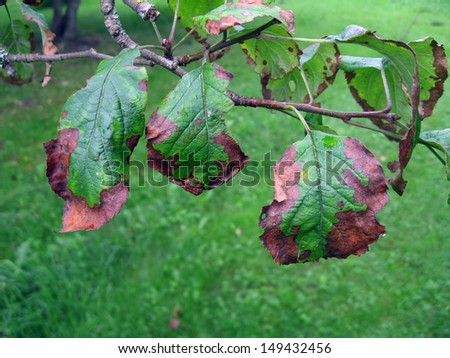
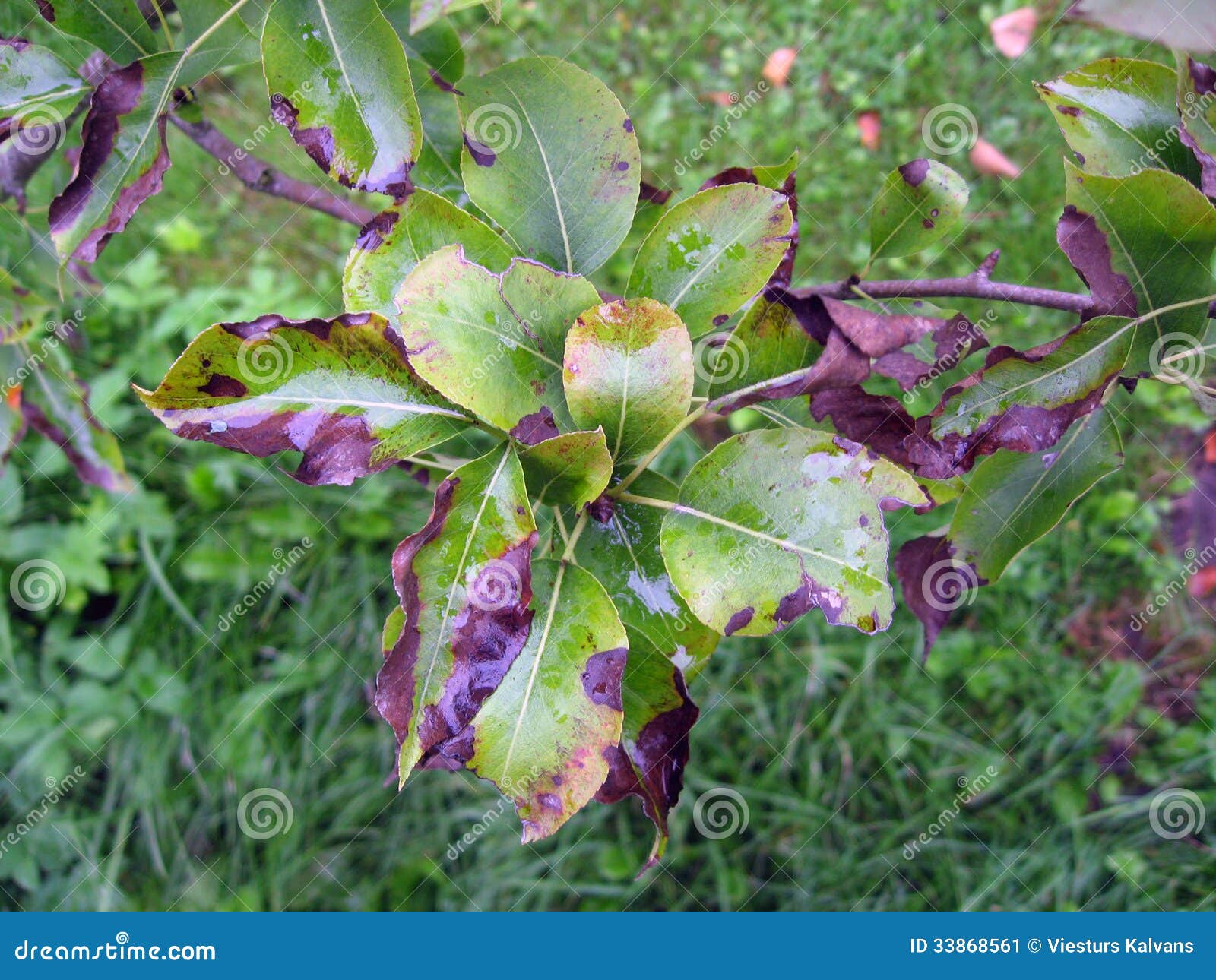
So wondering if this is indeed fire blight and if so is it worth trying to save these trees? There are a good number of other young pome fruits in the same area.
I have read about fireblight in other fruit forums and I did a little on-line research today. I don't know how prevalent it is around here and I don't know if this is the time of year when one would see problems. However, do you see any signs of the so-called "shepard's hook" which is supposed to be a distinctive feature? It would be nice to see the photos of your trees when you can get them. I took a photo of one leaf on my Honeysweet pear tree which has a blackened edge/section though I am not concerned about it. I don't have many leaves left on my Asian pear tree so there weren't many to look at. I know this is probably not much of an answer but I'm not convinced you may have anything more than the leaves shutting down for winter. Anyone else have an opinion?
redberry
As redberry said, “I'm not convinced you may have anything more than the leaves shutting down for winter.” ...those were my thoughts as well. If it’s not detrimental to the fruit or actually ‘killing’ the tree, it may simply be the nature of things.
Also, those are very young trees; keep the grass from their root zone, deep water in summer, protect them from bark damage, watch for serious insect predation and they should eventually establish themselves to the point of fending off most anything...
Take a picture next year if it happens to rule out rust. I would search for rust images online to see if you see one that looks familiar. If you don't recognize it, send the picture here next year which would improve our likelihood of recognizing it. We don't get a lot of fireblight here, unlike other places. You could also look up images of fireblight.
John S
PDX OR
Hi all, I'm new here but I figure I'll just add to this 8-year-old post so that when people search this stuff, related information is grouped together (tell me if it's better to make a new thread)
I've got a few pear trees that are 1 or 2 years old that are looking sick.
I'm new to growing pears, so despite searching online, I'm not sure if this is 'pear leaf curl' or fire blight or something else or multiple pathogens.
1. This first tree was grafted a year ago onto Pyrus communis rootstock. It is Ya Li. It's still in a pot; I haven't planted it yet.

2. This second graft is 2 or maybe 3 years old. It is Korean Giant 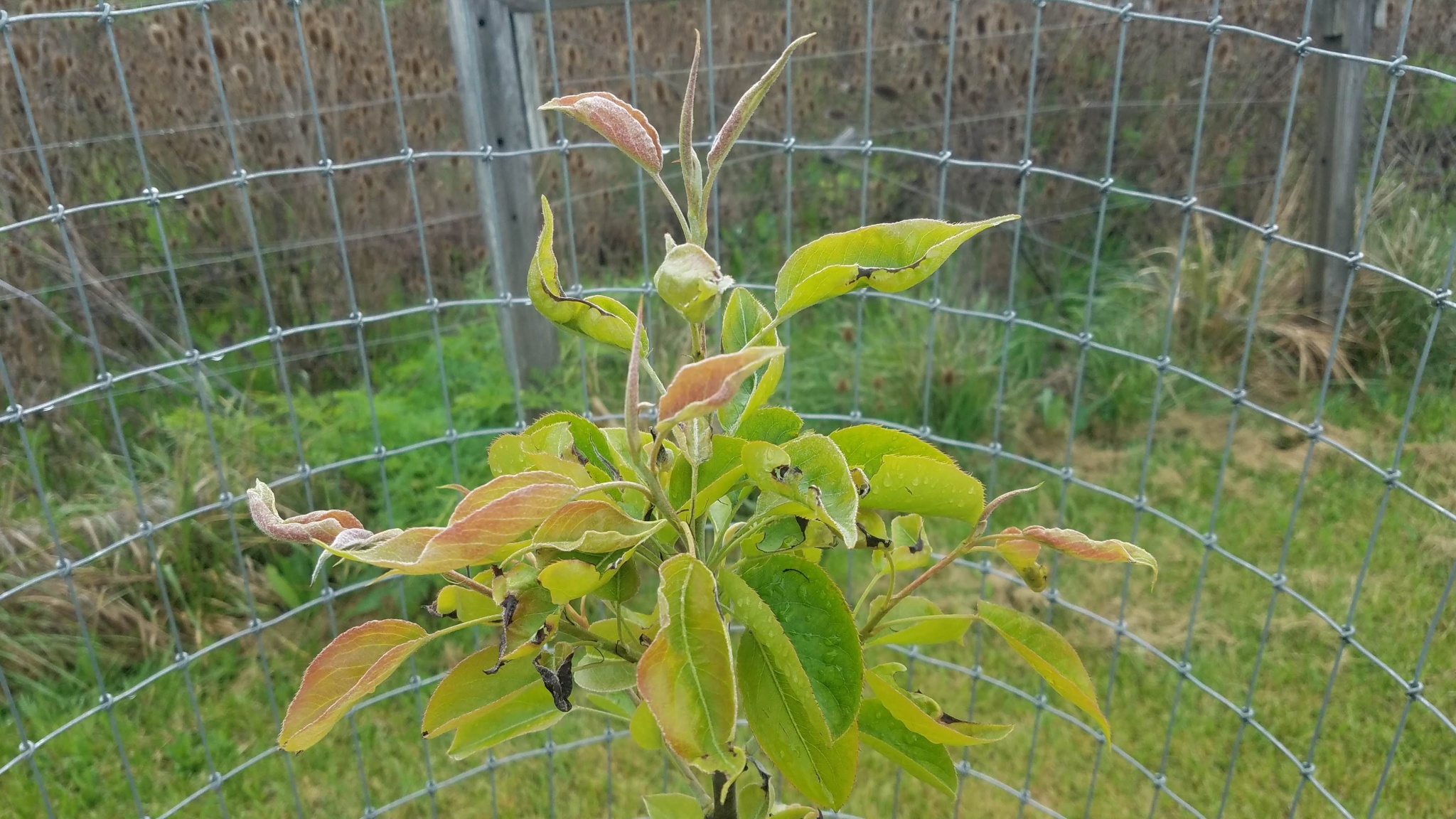
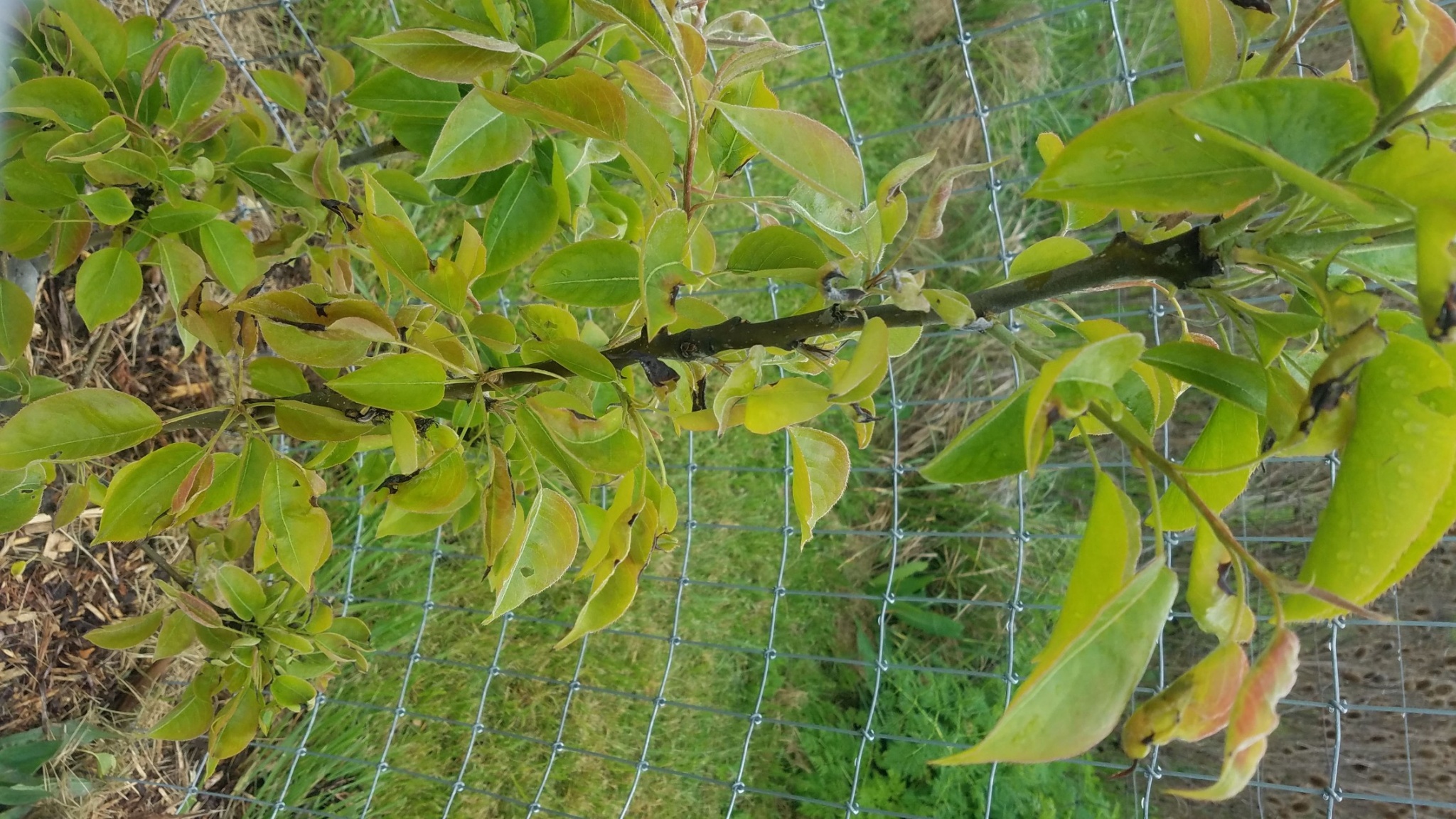
3. This tree is 2 maybe 3 year old. It's a 'Wolf River' Pear grafted onto some OHxF rootstock. The Wolf River part of the tree looks good to me, but there is another stem on the rootstock I was going to graft onto. Now, it looks to me like the rootstock is diseased but the scion is fine? The 1st picture below is of the rootstock's leaves.
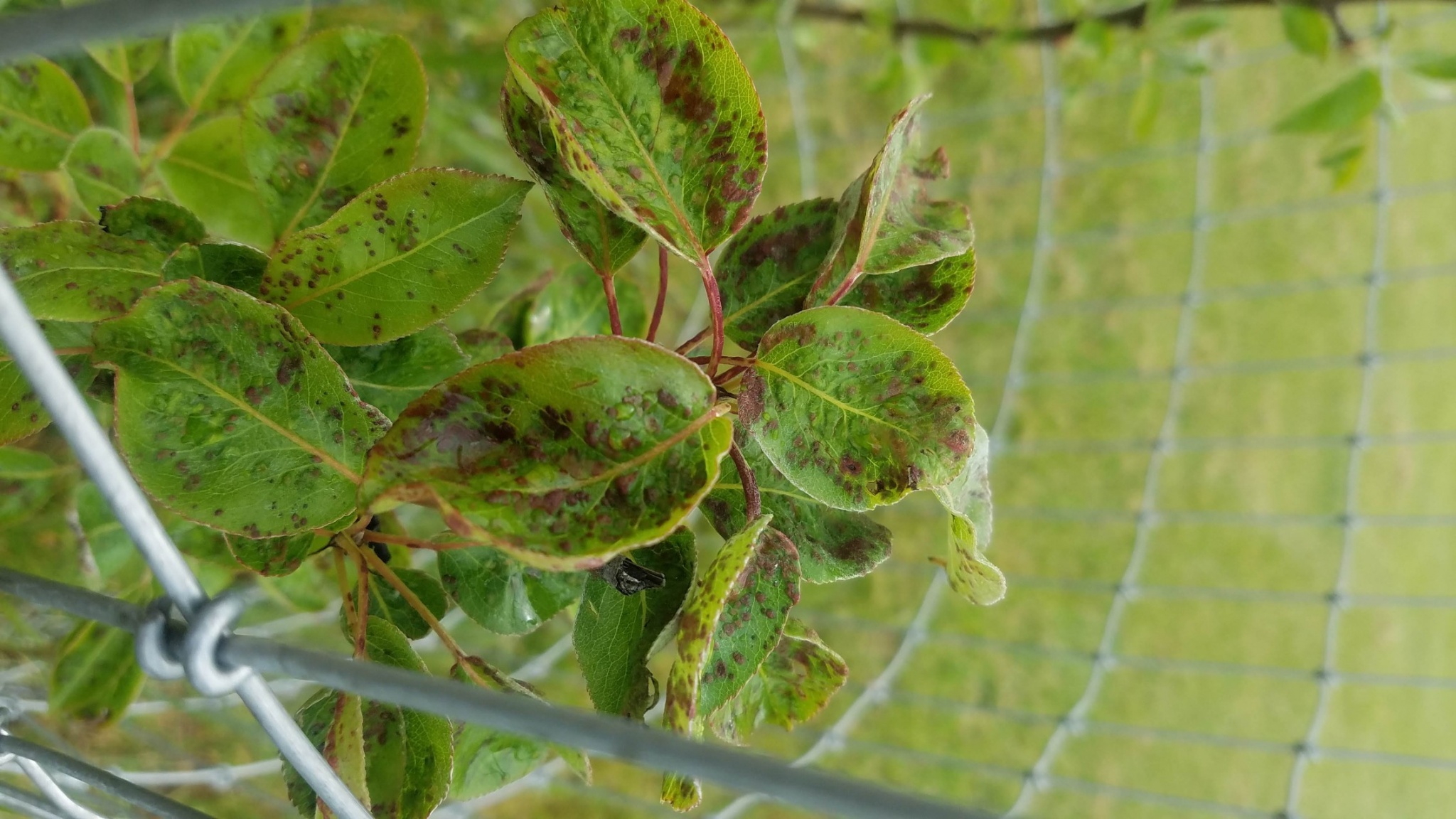
This photo is of the same Wolf River tree, but has the Wolf River in the foreground, with the sickly rootstock in the back
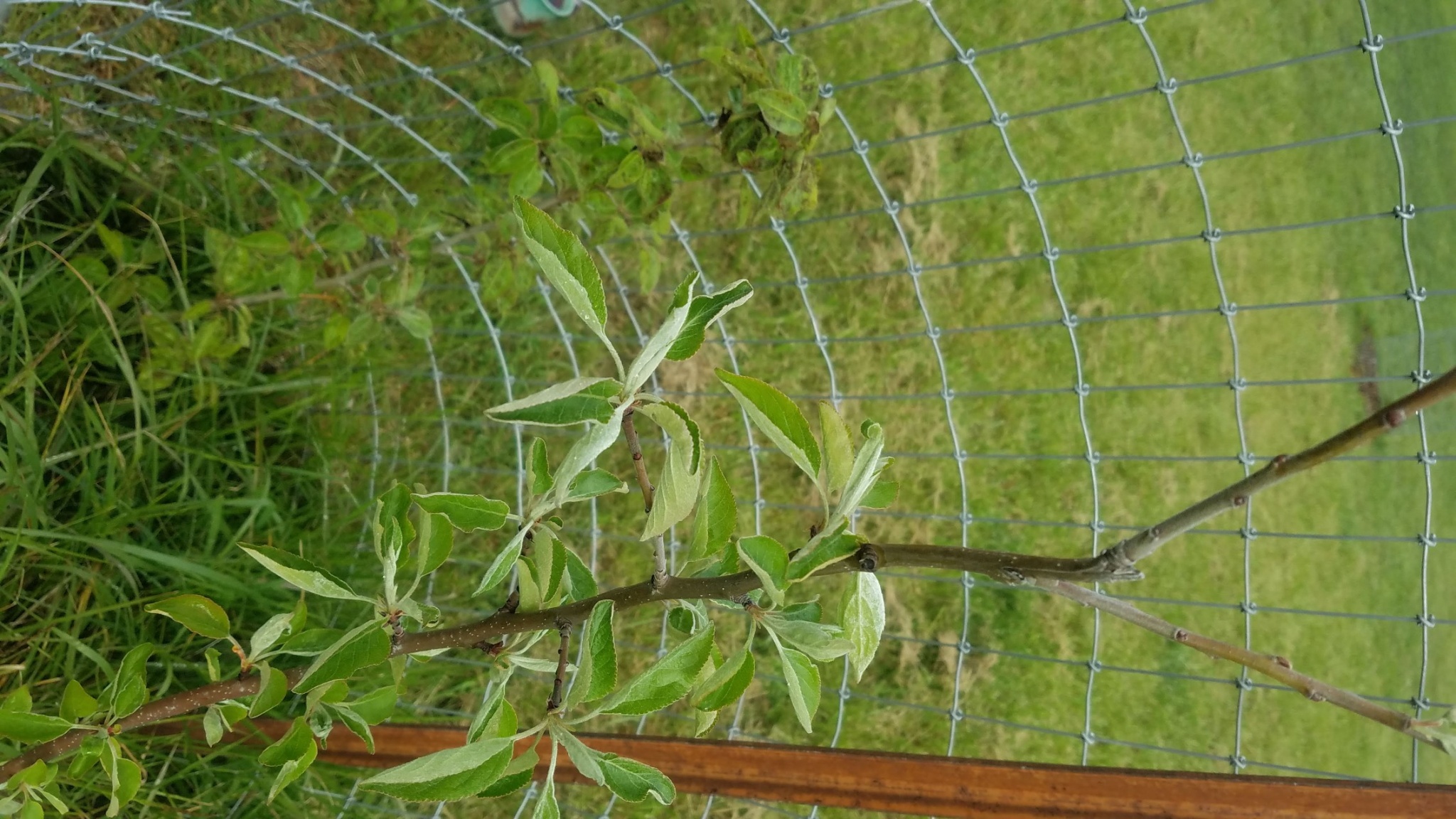
4. This is a 2 year old Ya Li on OHxF 333.
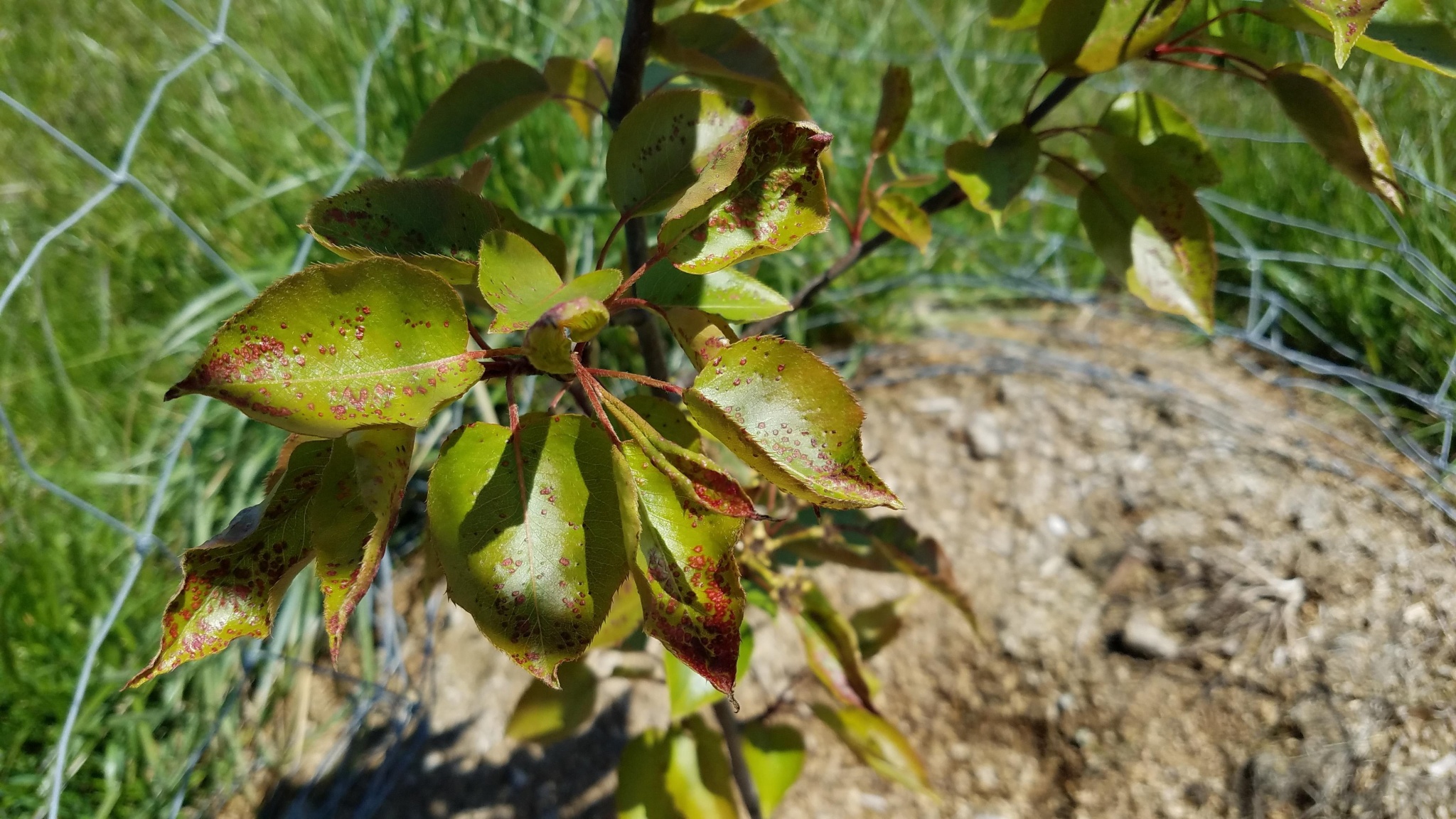
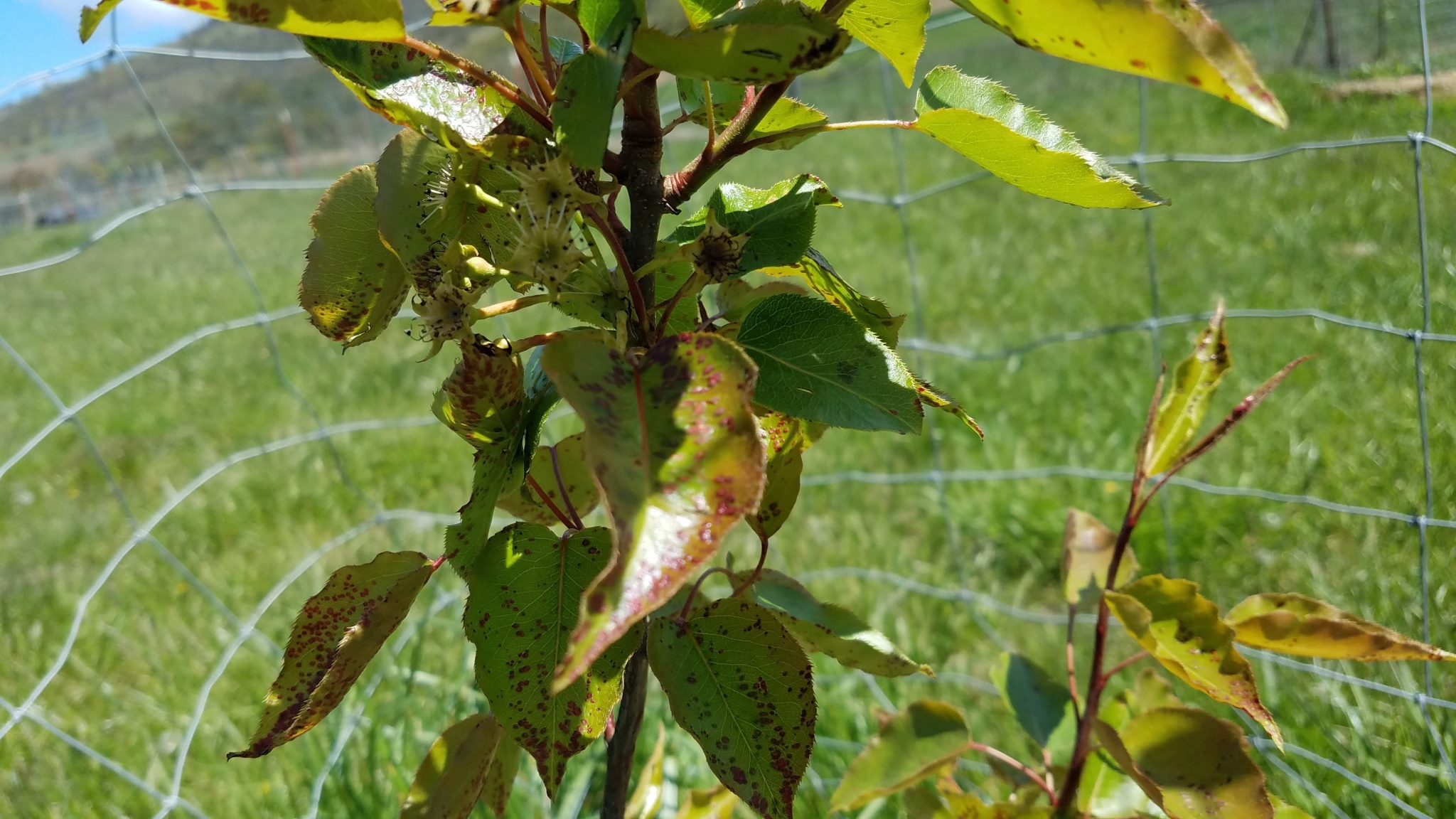
5. This is Abate Fetel, 2 or 3 years old
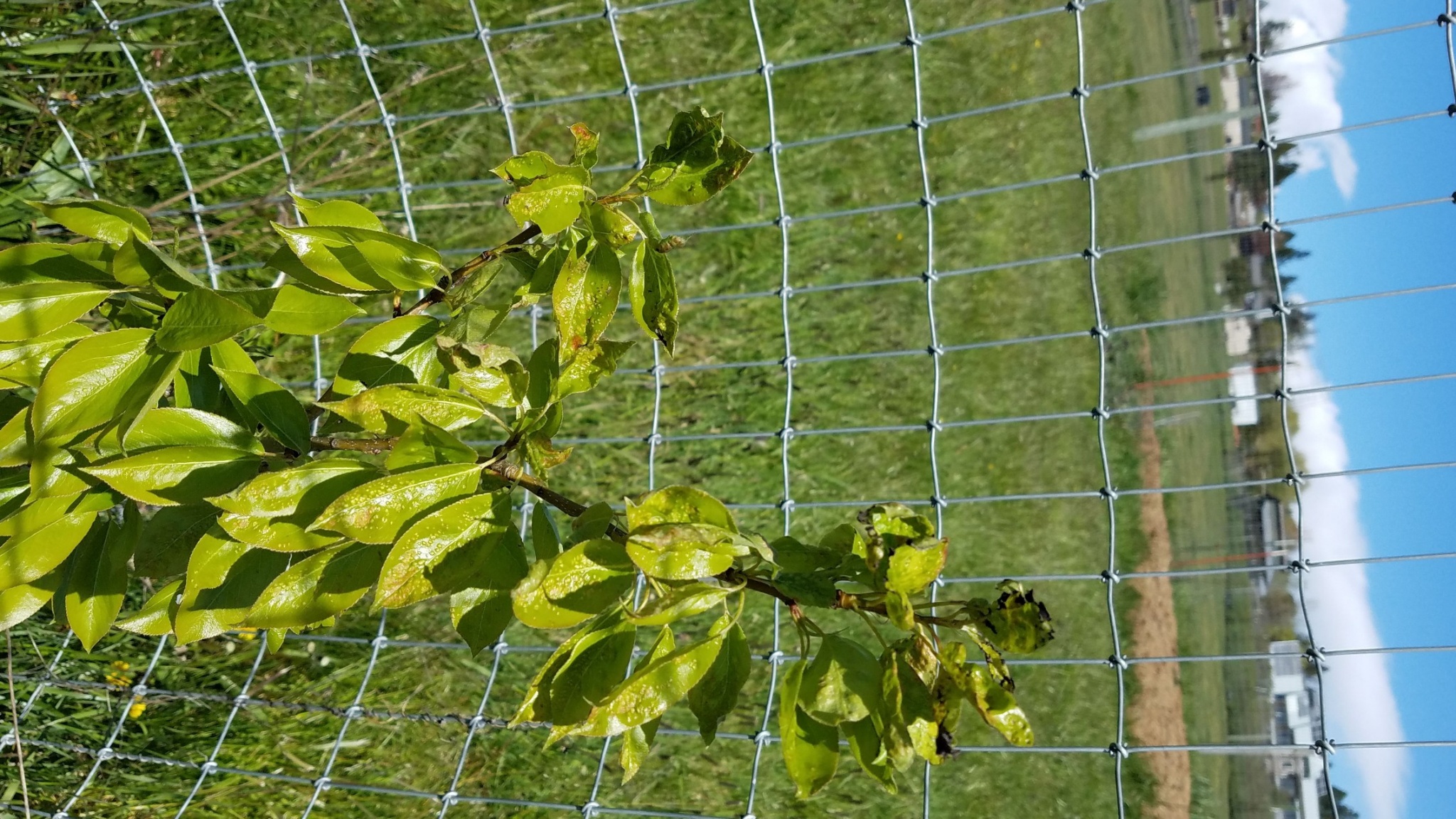

I want disease resistant trees, I don't want to spray my trees. I'm inclined to dig up some of these trees if they are going to be like this. There are other Asian Pears I'm growing that look perfect so far; Shinseki and Ho sui. There is another older Shinseki planted that hasn't looked infected either, could Shinseki be resiliant?
So my first question is: Is this just one disease, or two? Can you name it/them?
My second question is: Should I get these sick trees out of the orchard to not spread disease/because it will be a long battle with sickness? or is this common in pears and nothing to worry about?
I'm in Southern Oregon, Rogue Valley, 2000ft elevation, black clay soil.
And a third question: are there any Asian pear varieties that seem to be more disease resistant/would do best in my climate?
NurseryLog, welcome to the forum!
My first comment is that Wolf River is not a pear—it is an apple!
Wind, dry soil, hot temperatures, and physical damage can cause blackened edges. Spider mites can cause blackened and curled edges on pear leaves according to ask2extension. I don’t know if Pseudomonas is prevalent in your area, but it is very common where I live and causes blackened leaves and blossom, twig, and branch death. You also have pear leaf blister mites. There is no fire blight where I live, so I have no experience with that.
JeanW
I think Jean is right on for the latter 6 of 9 pictures being "pear blister mites" because comparable pictures from WSU indicate the same.
This must be what I have then. I went out last night to picture my columnar pear that has it, the pyrus betulafolia rootstock beneath it does not. So indeed since my other pear cultivars and my pyrus rootstock is spared means these are species or cultivar specific.
HOS hosted (2 in 1) pictures:
Left: infected pear cultivar grafted on another species Right: my plan of action
What I have in mind is to grab your attention of the possibility of pawpaw extracts working as a shampoo which has been tested effective against head lice in 2002. What I want is save my columnar pear so later on today I'm going to follow through with blending the tips of pawpaw branches into a shampoo so that the bread-bag inserted over the pear will be full of shampoo overnight.
Also, I will get back later and include microscope pictures samples of what little critters that may be seen under magnification. Internet sources indicate they are not seen unless magnified.
It's my understanding that "home remedies" like this are not supported officially due to the possibility of developing resistant organisms (eg. pawpaw resistant critters). In which case I see nothing wrong with trying Pawpaw tree shampoo one night and then possibly Metaluka tree oil (shampoo) another night a week down the road.
I tried inspecting for life inside those little pockets and gave up. I still assess this is a pear blister mite problem but I can't justify that just a shampoo job is going to cure my whole yard after seeing this happening elsewhere on other ohxf pear rootstocks on my lot. None of my orcas, devoe, or asian pears are effected yet. Only young shaded root suckers of said rootstocks.
I removed an infection on ohxf-513 and held it in my left hand while with my right hand took this smart-phone picture.
I don't know how mites got here. They seem to be infecting the most prone cultivar first, then secondly the most shaded and (as yet) uncared for pear rootstocks. In my case I need pollen for further improvements to the columnar pear, so I will cage out any possible insect vectors for a year until first flowers arrive, then destroy!
Idyllwild
jafar
Marsha H
Viron
John S
1 Guest(s)
